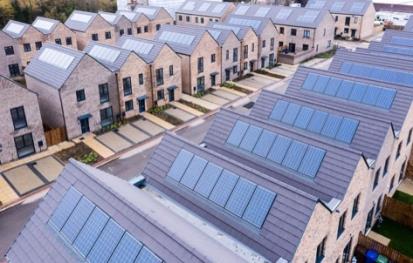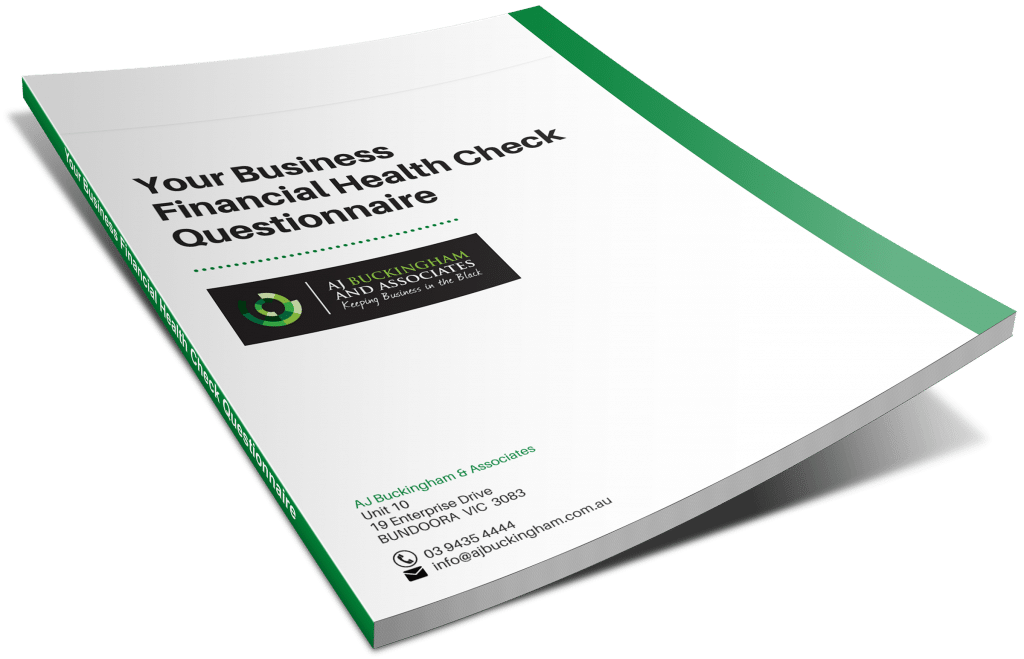
Welcome to our blog post discussing the recently released 2023-24 Federal Budget, unveiled by Jim Chalmers, the Federal Treasurer, on May 9th, 2023. This budget has been carefully crafted with the aim of providing assistance to everyday Australians who have been grappling with the substantial increases in the cost of living over the past twelve to eighteen months. It is evident that these cost escalations will persist until measures are taken to bring inflation under control.
For small businesses, it is crucial to stay vigilant as the budget introduces various initiatives related to taxpayers. Furthermore, adequate funding will be allocated to the Australian Taxation Office (ATO) and other government agencies to ensure strict compliance with tax regulations. Notably, the budget includes specific provisions for the following areas:
- ATO Support for Small and Medium Businesses: Over the span of four years, the ATO will receive funding aimed at reducing the administrative burden associated with taxes for small and medium-sized enterprises. This initiative seeks to streamline paperwork and minimize the time spent by small businesses on tax-related matters.
- Extended Funding for GST Compliance: To address emerging risks to Goods and Services Tax (GST) revenue, the budget includes an extension of funding for GST compliance for an additional four years.
Below, we provide a comprehensive overview of the key changes featured in the Budget. It’s important to note that while certain changes will affect a greater number of people, we have included additional details specifically for those that are expected to have a broader impact.
Please select the respective categories by clicking on the links provided below:
- Income support payment base rates will be increased by $40 per fortnight. The increase will apply to JobSeeker Payment, Youth Allowance, Parenting Payment (Partnered), Austudy, Abstudy, Disability Support Pension (Youth) and Special Benefit from 20 September 2023.
- The minimum age at which older people qualify for the higher JobSeeker Payment rate will be reduced from 60 to 55 years. This applies to those who have received the payment for 9 or more continuous months. Eligible recipients will receive an increase in their base rate of payment of $92.10 per fortnight.
- The workforce participation incentive measures to support pensioners who want to work without impacting their pension payments will be extended for another 6 months to 31 December 2023. Originally announced in the Labor government’s 2022–23 Budget, the measure provides age and veterans pensioners a once-off credit of $4,000 to their Work Bonus income bank and temporarily increases the maximum income bank. Under this measure, pensioners can earn up to $11,800 before their pension is reduced.
- Eligibility for Parenting Payment (Single) will be extended to support single principal carers with a youngest child under 14 years of age.

- A number of measures will be introduced to increase support for social and affordable housing and improve access for home buyers.
- The maximum rates of the Commonwealth Rent Assistance(CRA) allowances will be increased by 15% to help address rental affordability challenges for CRA recipients.
- CPI indexed Medicare levy low-income threshold amounts for singles, families, and seniors and pensioners for the 2022–23 year were announced.
Medicare levy low-income threshold (at or below which no Medicare levy payable)
| Class of people | Single | Family |
| Individual | $24,276 ($23,365) | $40,939 ($39,402) |
| Senior Australians and eligible pensioners | $38,365 ($36,925) | $53,406 ($51,401) |
| Threshold increment for each additional dependent child/student |
$3,760 ($3,619) |
|
- Eligible lump sum payments in arrears will be exempt from the Medicare levy from 1 July 2024.
Individual Tax Rates and Thresholds for 2023
| Taxable Income | Tax on this income |
| 0 – $18, 200 | Nil |
| $18,201 – $45,000 | 19 cents for each $1 over $18,200 |
| $45,001 – $120,000 | $5,092 plus 32.5 cents for each $1 over $45,000 |
| $120,001 – $180,000 | $29,467 plus 37 cents for each $1 over $120,000 |
| $181,001 – and over | $51,667 plus 45 cents for each $1 over $180,000 |
- The instant asset write-off threshold for small businesses applying the simplified depreciation rules will be $20,000 for the 2023–24 income year.
- Small businesses (aggregated annual turnover less than $10 million). The measure will apply a $20,000 threshold for the instant write-off, applicable to eligible assets costing less than $20,000 first used or installed between 1 July 2023 and 30 June 2024. The $20,000 threshold will apply on a per asset basis, so small businesses can immediately write off multiple low-cost assets. The threshold had been suspended during the operation of temporary full expensing from 6 October 2020 to 30 June 2023.
-
-
- Assets costing $20,000 or more will continue to be placed into a small business depreciation pool under the existing rules.
-
-
-
- The provisions that prevent a small business entity from choosing to apply the simplified depreciation rules for 5 years after opting out will continue to be suspended until 30 June 2024.
-
- An additional 20% deduction will be available for small and medium business expenditure supporting electrification and energy efficiency.

The additional deduction will be available to businesses with aggregated annual turnover of less than $50 million. Eligible expenditure may include the cost of eligible depreciating assets, as well as upgrades to existing assets, that support electrification and more efficient use of energy. Certain exclusions will apply, including for electric vehicles, renewable electricity generation assets, capital works, and assets not connected to the electricity grid that use fossil fuels.
Examples of expenditure where the measure applies include:
- assets that upgrade to more efficient electrical goods (e.g., energy-efficient fridges)
- assets that support electrification (e.g. heat pumps and electric heating or cooling systems), and
- demand management assets (e.g. batteries or thermal energy storage).
Total eligible expenditure for the measure will be capped at $100,000, with a maximum additional deduction available of $20,000 per business.
When enacted, the measure will apply to eligible assets or upgrades first used or installed ready for use between 1 July 2023 and 30 June 2024. Full details of eligibility criteria will be finalised in consultation with stakeholders.
- FBT exemption for eligible plug-in hybrid electric cars will end from 1 April 2025. Arrangements involving plug-in hybrid electric cars entered into between 1 July 2022 and 31 March 2025 remain eligible for the exemption.
- An increased capital works deduction rate and reduced withholding on managed investment trust (MIT) payments will apply to new build-to-rent projects.
- The clean building managed investment trust (MIT) withholding tax concession will be extended from 1 July 2025 to eligible data centres and warehouses, where construction commences after 7:30 pm (AEST) on 9 May 2023.
- The start date of a measure to prevent franked distributions funded by certain capital raisings announced in the 2016–17 Mid-Year Economic and Fiscal Outlook has been postponed from 19 December 2016 to 15 September 2022.
- The introduction of tradeable biodiversity stewardship certificates issued under the Agriculture Biodiversity Stewardship Market scheme will be delayed to 1 July 2024.
- The Location Offset rebate and the Qualifying Australian Production Expenditure thresholds will be increased to boost investment in film production in Australia.
- Deductible gift recipients list to be updated.
-
Reducing tax concessions for superannuation balances exceeding $3 million.
Superannuation earnings tax concessions will be reduced for individuals with total superannuation balances in excess of $3 million.
From 1 July 2025, earnings on balances exceeding $3 million will incur a higher concessional tax rate of 30% (up from 15%) for earnings corresponding to the proportion of an individual’s total superannuation balance that is greater than $3 million. The change does not impose a limit on the size of superannuation account balances in the accumulation phase and it applies to future earnings, i.e. it is not retrospective.
Earnings relating to assets below the $3 million threshold will continue to be taxed at 15%, or zero if held in a retirement pension account.
Interests in defined benefit schemes will be appropriately valued and will have earnings taxed under this measure in a similar way to other interests.
Employers to be required to pay super guarantee on payday.
Employers will be required to pay their employees’ superannuation guarantee (SG) entitlements at the same time as they pay their salary and wages from 1 July 2026.
Employers are currently required to make SG contributions for an employee on a quarterly basis to avoid incurring a superannuation guarantee charge.
The proposed commencement date of 1 July 2026 is intended to provide employers, superannuation funds, payroll providers and other stakeholders sufficient time to prepare for the change.
Changes to the design of the superannuation guarantee charge will also be required to align with the increased payment frequency. The government will consult with relevant stakeholders on the design of these changes, with the final framework to be considered as part of the 2024–25 Budget.
In addition, funding will be provided to the ATO to, among other things, improve data matching capabilities to identify and act on cases of SG underpayment.
Sources: Budget Paper No 2, p 26; Budget Factsheet — Stronger foundations for a better future, p 62; Assistant Treasurer’s press release “Introducing payday super”, 2 May 2023.
Non-arm’s length income (NALI) amendments
The non-arm’s length income (NALI) measure announced by the Coalition government in 2022 will be amended to provide greater certainty to taxpayers.
On 24 January 2023, Treasury released a consultation paper on the following potential amendments to the NALI provisions:
- self-managed superannuation funds (SMSFs) and small APRA funds would be subject to a factor-based approach which would set an upper limit on the amount of fund income taxable as NALI due to a general expenses breach. The maximum amount of fund income taxable at the highest marginal rate would be 5 times the level of the general expenditure breach, calculated as the difference between the amount that would have been charged as an arm’s length expense and the amount that was actually charged to the fund. Where the product of 5 times the breach is greater than all fund income, all fund income will be taxed at the highest marginal rate, and
- large APRA-regulated funds would be exempted from the NALI provisions for general expenses of the fund.
To provide greater certainty to taxpayers, the NALI provisions which apply to expenditure incurred by superannuation funds will be amended by:
- limiting income of SMSFs and small APRA-regulated funds that are taxable as NALI to twice the level of a general expense.
- Additionally, fund income taxable as NALI will exclude contributions.
- exempting large APRA regulated funds from the NALI provisions for both general and specific expenses of the fund, and
- exempting expenditure that occurred prior to the 2018–19 income year.
- Income support payment base rates will be increased by $40 per fortnight. The increase will apply to JobSeeker Payment, Youth Allowance, Parenting Payment (Partnered), Austudy, Abstudy, Disability Support Pension (Youth) and Special Benefit from 20 September 2023.
- The minimum age at which older people qualify for the higher JobSeeker Payment rate will be reduced from 60 to 55 years. This applies to those who have received the payment for 9 or more continuous months. Eligible recipients will receive an increase in their base rate of payment of $92.10 per fortnight.
- The workforce participation incentive measures to support pensioners who want to work without impacting their pension payments will be extended for another 6 months to 31 December 2023. Originally announced in the Labor government’s 2022–23 Budget, the measure provides age and veterans pensioners a once-off credit of $4,000 to their Work Bonus income bank and temporarily increases the maximum income bank. Under this measure, pensioners can earn up to $11,800 before their pension is reduced.
- Eligibility for Parenting Payment (Single) will be extended to support single principal carers with a youngest child under 14 years of age.

- A number of measures will be introduced to increase support for social and affordable housing and improve access for home buyers.
- The maximum rates of the Commonwealth Rent Assistance(CRA) allowances will be increased by 15% to help address rental affordability challenges for CRA recipients.
- CPI indexed Medicare levy low-income threshold amounts for singles, families, and seniors and pensioners for the 2022–23 year were announced.
Medicare levy low-income threshold (at or below which no Medicare levy payable)
| Class of people | Single | Family |
| Individual | $24,276 ($23,365) | $40,939 ($39,402) |
| Senior Australians and eligible pensioners | $38,365 ($36,925) | $53,406 ($51,401) |
| Threshold increment for each additional dependent child/student |
$3,760 ($3,619) |
|
- Eligible lump sum payments in arrears will be exempt from the Medicare levy from 1 July 2024.
Individual Tax Rates and Thresholds for 2023
| Taxable Income | Tax on this income |
| 0 – $18, 200 | Nil |
| $18,201 – $45,000 | 19 cents for each $1 over $18,200 |
| $45,001 – $120,000 | $5,092 plus 32.5 cents for each $1 over $45,000 |
| $120,001 – $180,000 | $29,467 plus 37 cents for each $1 over $120,000 |
| $181,001 – and over | $51,667 plus 45 cents for each $1 over $180,000 |
- The instant asset write-off threshold for small businesses applying the simplified depreciation rules will be $20,000 for the 2023–24 income year.
- Small businesses (aggregated annual turnover less than $10 million). The measure will apply a $20,000 threshold for the instant write-off, applicable to eligible assets costing less than $20,000 first used or installed between 1 July 2023 and 30 June 2024. The $20,000 threshold will apply on a per asset basis, so small businesses can immediately write off multiple low-cost assets. The threshold had been suspended during the operation of temporary full expensing from 6 October 2020 to 30 June 2023.
-
-
- Assets costing $20,000 or more will continue to be placed into a small business depreciation pool under the existing rules.
-
-
-
- The provisions that prevent a small business entity from choosing to apply the simplified depreciation rules for 5 years after opting out will continue to be suspended until 30 June 2024.
-
- An additional 20% deduction will be available for small and medium business expenditure supporting electrification and energy efficiency.

The additional deduction will be available to businesses with aggregated annual turnover of less than $50 million. Eligible expenditure may include the cost of eligible depreciating assets, as well as upgrades to existing assets, that support electrification and more efficient use of energy. Certain exclusions will apply, including for electric vehicles, renewable electricity generation assets, capital works, and assets not connected to the electricity grid that use fossil fuels.
Examples of expenditure where the measure applies include:
- assets that upgrade to more efficient electrical goods (e.g., energy-efficient fridges)
- assets that support electrification (e.g. heat pumps and electric heating or cooling systems), and
- demand management assets (e.g. batteries or thermal energy storage).
Total eligible expenditure for the measure will be capped at $100,000, with a maximum additional deduction available of $20,000 per business.
When enacted, the measure will apply to eligible assets or upgrades first used or installed ready for use between 1 July 2023 and 30 June 2024. Full details of eligibility criteria will be finalised in consultation with stakeholders.
- FBT exemption for eligible plug-in hybrid electric cars will end from 1 April 2025. Arrangements involving plug-in hybrid electric cars entered into between 1 July 2022 and 31 March 2025 remain eligible for the exemption.
- An increased capital works deduction rate and reduced withholding on managed investment trust (MIT) payments will apply to new build-to-rent projects.
- The clean building managed investment trust (MIT) withholding tax concession will be extended from 1 July 2025 to eligible data centres and warehouses, where construction commences after 7:30 pm (AEST) on 9 May 2023.
- The start date of a measure to prevent franked distributions funded by certain capital raisings announced in the 2016–17 Mid-Year Economic and Fiscal Outlook has been postponed from 19 December 2016 to 15 September 2022.
- The introduction of tradeable biodiversity stewardship certificates issued under the Agriculture Biodiversity Stewardship Market scheme will be delayed to 1 July 2024.
- The Location Offset rebate and the Qualifying Australian Production Expenditure thresholds will be increased to boost investment in film production in Australia.
- Deductible gift recipients list to be updated.
-
Reducing tax concessions for superannuation balances exceeding $3 million.
Superannuation earnings tax concessions will be reduced for individuals with total superannuation balances in excess of $3 million.
From 1 July 2025, earnings on balances exceeding $3 million will incur a higher concessional tax rate of 30% (up from 15%) for earnings corresponding to the proportion of an individual’s total superannuation balance that is greater than $3 million. The change does not impose a limit on the size of superannuation account balances in the accumulation phase and it applies to future earnings, i.e. it is not retrospective.
Earnings relating to assets below the $3 million threshold will continue to be taxed at 15%, or zero if held in a retirement pension account.
Interests in defined benefit schemes will be appropriately valued and will have earnings taxed under this measure in a similar way to other interests.
Employers to be required to pay super guarantee on payday.
Employers will be required to pay their employees’ superannuation guarantee (SG) entitlements at the same time as they pay their salary and wages from 1 July 2026.
Employers are currently required to make SG contributions for an employee on a quarterly basis to avoid incurring a superannuation guarantee charge.
The proposed commencement date of 1 July 2026 is intended to provide employers, superannuation funds, payroll providers and other stakeholders sufficient time to prepare for the change.
Changes to the design of the superannuation guarantee charge will also be required to align with the increased payment frequency. The government will consult with relevant stakeholders on the design of these changes, with the final framework to be considered as part of the 2024–25 Budget.
In addition, funding will be provided to the ATO to, among other things, improve data matching capabilities to identify and act on cases of SG underpayment.
Sources: Budget Paper No 2, p 26; Budget Factsheet — Stronger foundations for a better future, p 62; Assistant Treasurer’s press release “Introducing payday super”, 2 May 2023.
Non-arm’s length income (NALI) amendments
The non-arm’s length income (NALI) measure announced by the Coalition government in 2022 will be amended to provide greater certainty to taxpayers.
On 24 January 2023, Treasury released a consultation paper on the following potential amendments to the NALI provisions:
- self-managed superannuation funds (SMSFs) and small APRA funds would be subject to a factor-based approach which would set an upper limit on the amount of fund income taxable as NALI due to a general expenses breach. The maximum amount of fund income taxable at the highest marginal rate would be 5 times the level of the general expenditure breach, calculated as the difference between the amount that would have been charged as an arm’s length expense and the amount that was actually charged to the fund. Where the product of 5 times the breach is greater than all fund income, all fund income will be taxed at the highest marginal rate, and
- large APRA-regulated funds would be exempted from the NALI provisions for general expenses of the fund.
To provide greater certainty to taxpayers, the NALI provisions which apply to expenditure incurred by superannuation funds will be amended by:
- limiting income of SMSFs and small APRA-regulated funds that are taxable as NALI to twice the level of a general expense.
- Additionally, fund income taxable as NALI will exclude contributions.
- exempting large APRA regulated funds from the NALI provisions for both general and specific expenses of the fund, and
- exempting expenditure that occurred prior to the 2018–19 income year.


